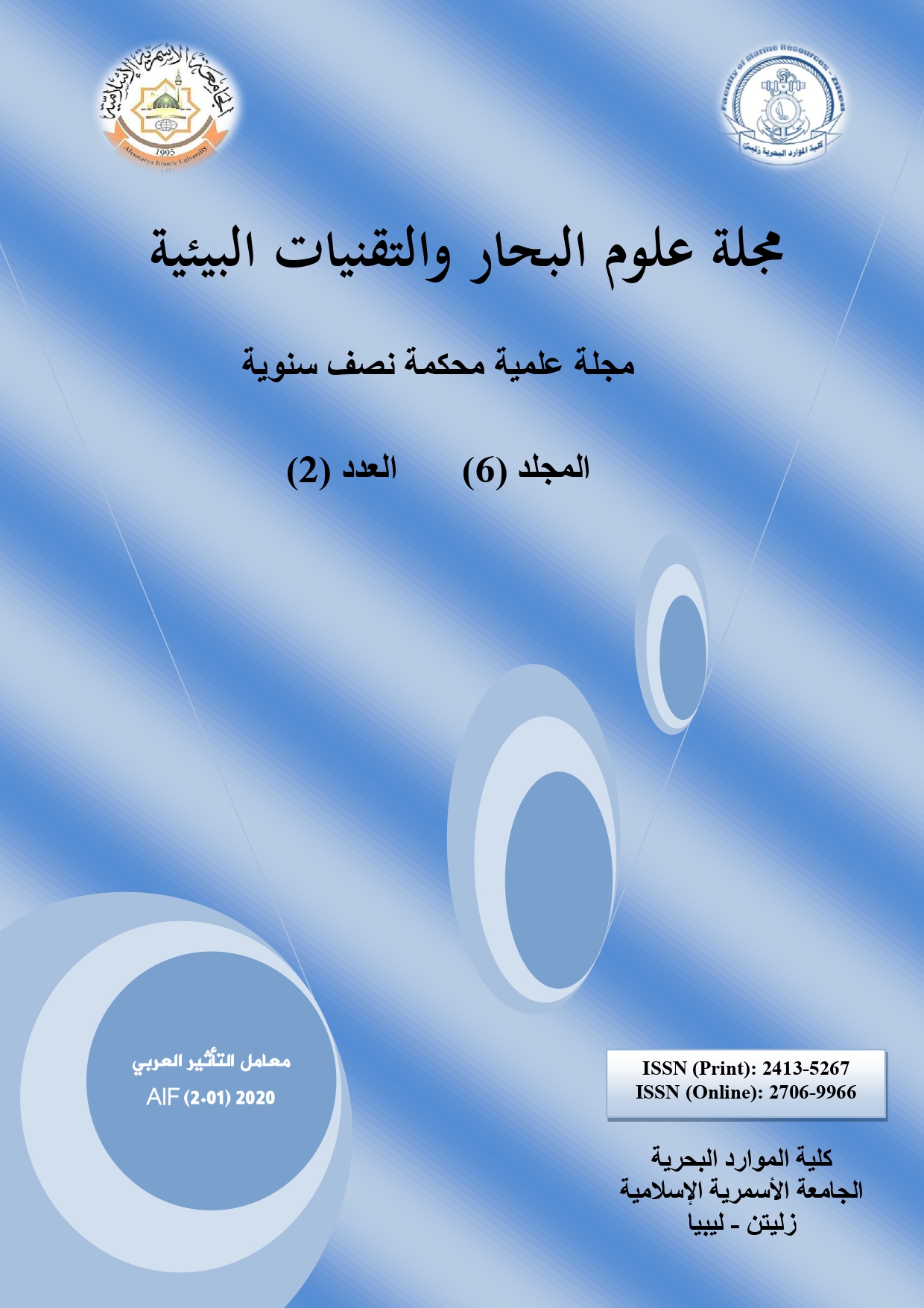مؤشرات التقييم والتوصيف للنفط الخام والمنتجات البترولية
DOI:
https://doi.org/10.59743/jmset.v6i2.38الكلمات المفتاحية:
النفط الخام، قطفات النفط، توصيف المعلمات، الحلو والحامض، مصفاة البترول، الكيروسين، النافثا والديزلالملخص
لطالما كان توصيف النفط الخام أحد مجالات الاهتمام في مجال التكرير؛ ومع ذلك، فإن الحاجة إلى تحديد خصاص النفط للخام اكتسبت أهمية في عمليات الإنتاج والتوزيع، ويتم القيام بذلك ببساطة عن طريق قياس خواص للنفط الخام حيث تتغير خواص هذه الخواص تبعا للطبيعة الجيولوجية الموجد فيه النفط في المصائد وبالتالي يجب دراسة الخواص الفيزيائية والكيميائية وتحديدها لهذا النوع من النفط أو ذلك، من هذه الخصائص الفيزيائية والكيميائية مثل °API (المعهد الأمريكي للبترول) الوزن النوعي، نقطة الانسكاب، اللزوجة، محتوى الكبريت الكلي، الضغط البخاري، التقطير، نقطة الغليان الأولية (I.B.P.)، نقطة الغليان النهائية (F.B.P.)، تم تقييم بقايا ومحتويات الهيدروكربون من الزيوت الخام التي تم جمعها من حقول النفط المختلفة في حقول مسلة والسرير والنافورة باستخدام إجراءات ASTM القياسية. تمت مقارنة نتائج الزيوت الخام في حقول النفط الثلاثة مع بعضها البعض ومع غيرها من النفط الخام العالمية. كما تم فحص معايير وتوصيف المنتجات البترولية الخاصة بهم. وقد أجريت هذه الدراسة على زيوت مسلة والسرير والنافورة الخام في عام 2017 التي يتم خلطها معا لتغذية مصفاة النفط في طبرق. وقد تم قياس المعايير ومواصفات المزيج والمنتجات البترولية للمصفاة بما في ذلك النافثا الخفيفة والنافثا الثقيلة والكيروسين والديزل ومقارنتها مع أنواع النفط الخام الأخرى. وفقا لمعايير التقييم، يمكن تصنيف الزيوت الخام التي تم فحصها على أنها زيت خام حلو خفيف بسبب القيمة العالية للــــ°API وانخفاض محتوى الكبريت فيه، وأن نسبة زيت الديزل منخفض. كما كان عامل (K) منخفض. كما تبين أن النفط الخام الخفيف يتميز بنسبة عالية من الكسر الخفيف، وأن نقطة انسكاب الزيت الخام الخفيف أعلى من تلك الخاصة بالنفط الخام الثقيل. كما وظهر محتوى الملح محتوى منخفضًا في المزيج مقارنة بأنواع أخرى. ولوحظ ازدياد نقطة غليان نواتج التقطير مع زيادة النسبة المئوية لحجم الكسر. علاوة على ذلك، يحتوي الديزل على نقطة غليان أعلى من الكيروسين الذي يحتوي على نقطة غليان أعلى من النافثا لجميع الأجزاء المجمعة. كما وجد أن محتوى الماء له آثار قليلة في النفط الخام.
المراجع
AGOCO (2014). Arabian Gulf Oil Company, Oil Refinery. Tobruk, Libya.
ASTM (2000). Annual Book of ASTM Standards. American Society for Testing and Materials, West Conshohocken, PA.
Conaway C.F. (1999). The Petroleum Industry: A Non-technical Guide, Pennwell Books, pp. 69-73.
Fulkerson W. et al. (2005). Scientific American, September.
Habson G.D. (1984). Modern Petroleum Technology, 5th, Part I & II, Institute of Petroleum, John-Wiley & Sons, Chichester.
Kite W.H. Jr., and Pegg R.E. (1993). In: Criteria for Quality of Petroleum Products. Allinson J.P. (Editor). John Wiley & Sons, New York, Ch. 7.
Kramer L.N. (2004). Crude oil and quality variations. Petroleum Technology Quarterly, 9(5): 87-97.
Lambert D. (2007). Determination of crude properties. Petroleum Technology Quarterly, 12(3): 119.
McCann J.M. (1998). In: Manual on Hydrocarbon Analysis, 6th ed., Drews A.W. (Editor). American Society for Testing and Materials, West Conshohocken, PA, Ch. 2.
Mendez C.A., Grossmann I.E., Harjunkoski I., and Kabore P. (2006). A simultaneous optimization approach for off- line blending and scheduling of oil- refinery operation. Computers and chemical Engineering, 30: 614-634.
Riazi M.R., and Al-Sahhaf T.A. (2006). Physical properties of heavy petroleum fractions and crude oils. Fluid Phase Equilibra, 117: 217-224.
Speight J.G. (1999). The Chemistry and Technology of Petroleum, 3rd ed. Marcel Dekker, New York.
Speight J.G. (2001). Handbook of Petroleum Analysis. John Wiley & Sons, New York.
Speight J.G., and Ozum B. (2002). Petroleum Refining Processes. Marcel Dekker, New York.
Stratiev D., Dinkov R., Petkov K., and Stanulov K. (2010). Evaluation of crude oil quality. Petroleum & Coal, 52(1): 35-43.
Yeung T.W. (2006). Evaluating opportunity crude processing. Petroleum Technology Quarterly, 11(5): 93-96.
التنزيلات
منشور
إصدار
القسم
الرخصة
الحقوق الفكرية (c) 2020 مجلة علوم البحار والتقنيات البيئية

هذا العمل مرخص بموجب Creative Commons Attribution 4.0 International License.









